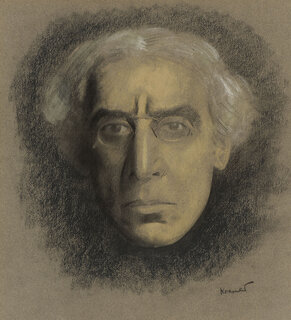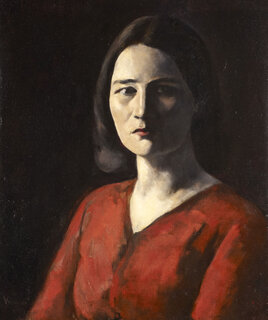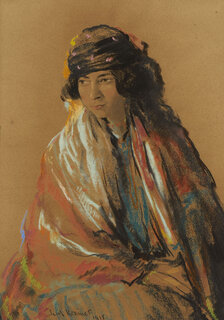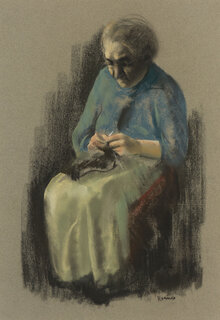
© Josef Herman estate
Refugees is a rare, important early painting, thought lost for over 60 years. Herman destroyed the majority of work from this period in 1948, considering it too influenced by Chagall. Blue was the dominant colour of Herman’s Glasgow years, used as a nostalgic evocation of a lost Warsaw with its moonlit spires. Like much of Herman’s Glasgow work, this painting draws strongly on his eastern European Jewish heritage and themes. However the refugees also represent the wider displacement of peoples uprooted and forced into exile by the upheavals of the Second World War. The family’s unknown fate is symbolized by the cat with a mouse dangling from its jaw. The treatment of the figures reflects Herman’s admiration for Käthe Kollwitz, while the fearful child with her hand in her mouth is reminiscent of Goya.
Among other works from this early period are the sketch Musicians (c.1940–43) and a portrait drawing of the Yiddish poet, Avram Stencl. In 2011 Ben Uri mounted the largest exhibition to date of Herman’s work from this rare period.




